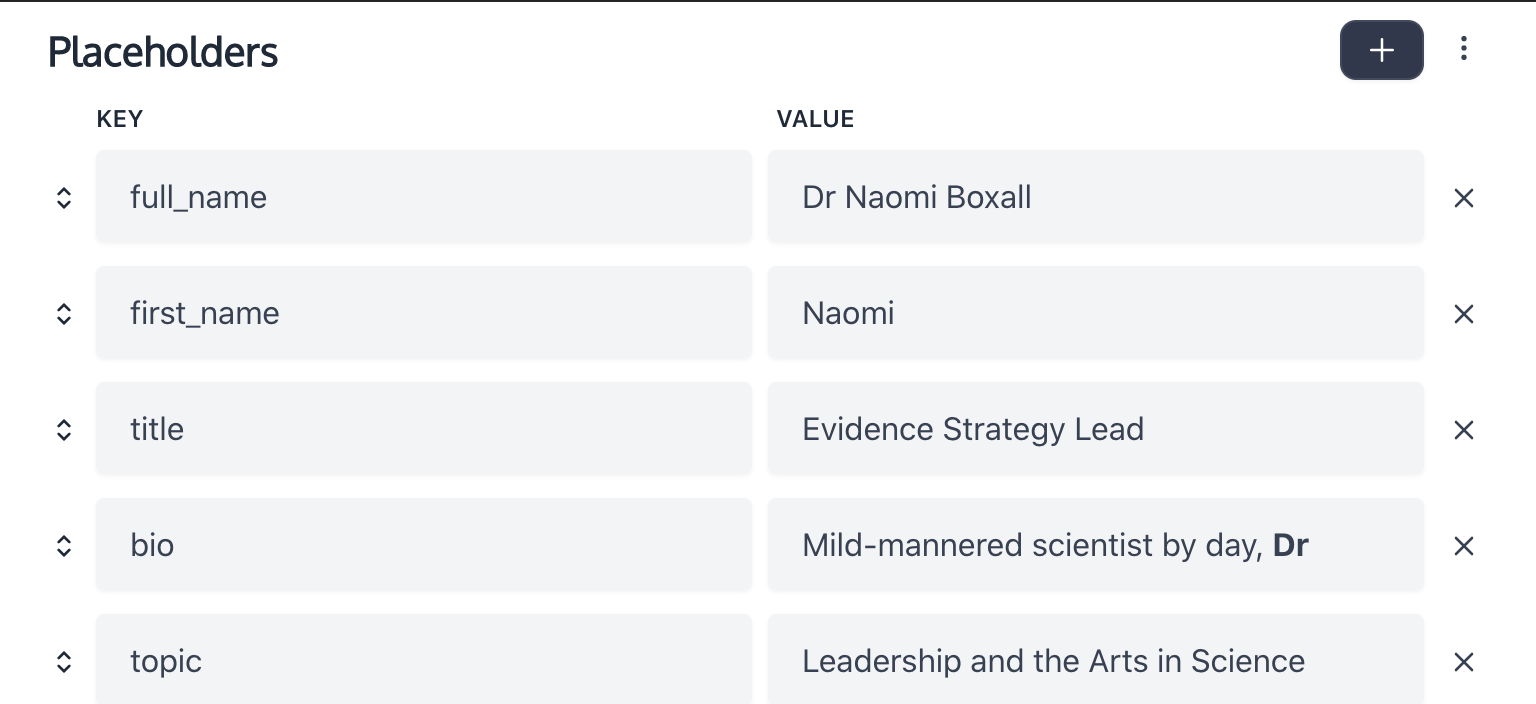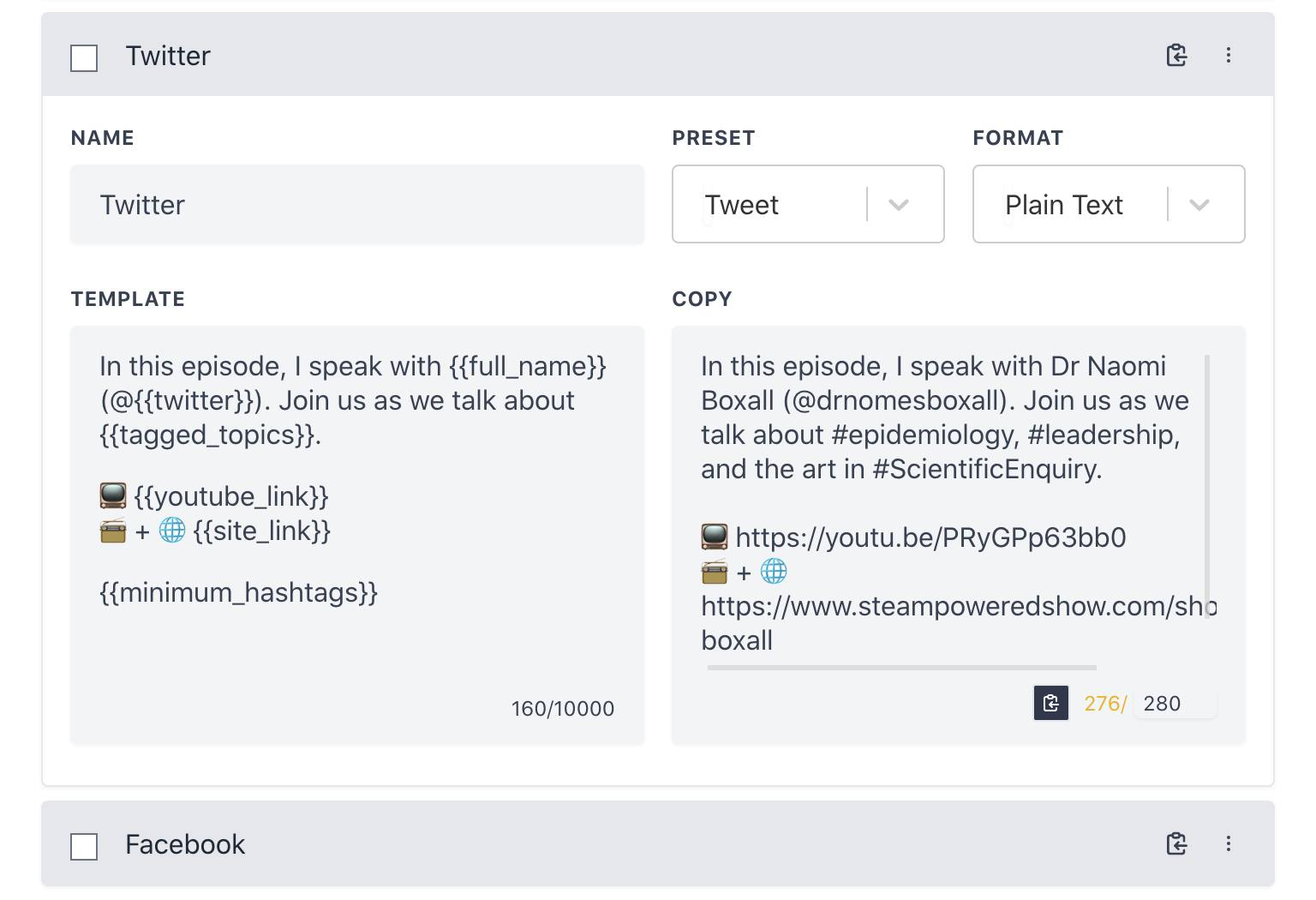How STEAM Powered saves time with Copybara for copy management and distribution
Founder Michele Ong speaks about her use case for Copybara, and its impact on her content creation workflow for STEAM Powered.
In this case study, we look at how Copybara Founder, Michele Ong, in an act of dogfooding, uses the service to save time with copy management and distribution tasks for her show STEAM Powered.
What is STEAM Powered?
STEAM Powered is a podcast and a YouTube channel where I have conversations with Women in STEMM (Science, Technology, Engineering, Mathematics, and Medicine) fields about their journey, work, passions, and lessons they've learned along the way.
What's wonderful about this show is that we get to see the incredible scope of STEAM fields, and learn how everyone's journey is different. Our paths are not always linear, and more often than not, we take the long way around. It's this amazing diversity of our backgrounds, experiences, and inspirations that inform our contributions in the fields in which we live and work, and allows us to innovate and excel.
What is your role in this project?
Creator, host, producer, researcher, video editor, audio engineer, promoter, IT. You name it, I do it. I'm a one-woman band.
What are some of the challenges you face as a creator?
STEAM Powered is a passion project. But I'm also a founder, technologist, dev, and parent, so time is a rare commodity. There's a lot of manual work involved in creating, and it's an exercise in continuous improvement and learning to be better and more efficient at what you do.
I have developed tools and templates to help me be more efficient, but one of the more time-consuming aspects of creating a podcast or YouTube channel is distribution and promotion. Essentially letting people know new content is out. Even with social media scheduling tools, you still have to craft your copy and get it into the right shape before sending it to the scheduler. For those that aren't connected to schedulers, it's an entirely manual process. All of that takes time.
How has Copybara improved your workflow?
My copy is generally the same for every episode, just with details customised for each guest. This copy is used on YouTube, Podbean, the show website, Tumblr, Twitter, Facebook, Instagram, TikTok, LinkedIn, Polywork, Patreon, and Ko-Fi.
All of these platforms have different content lengths, some also have title lengths, use hashtags, or have mentions.
I had a template for every platform with placeholders in a document, and used 'search and replace' for each of the customisations. I'd then manually copy and paste each bit of copy to its destination, and finesse it into the right lengths.
In addition to generating the image assets, it's a tedious task that takes longer than it really ought to.
Copybara reduces the tedium of this aspect of content creation by giving me a single point from which to manage my copy.
It allows me to manage my placeholders.

I can also create reusable collections of templates and my placeholders will be substituted in live so that I can see what the final result will look like. With presets for common platforms, the copy will be in the format I need and I can ensure that it stays within the necessary character limits.

Using Copybara's webhooks feature, I send my finalised copy to Make (formerly Integromat) and automatically create scheduled posts on Twitter, LinkedIn, and Instagram via Buffer, and on Tumblr and Facebook directly.

I'm currently working on a Bitbucket module so that the show notes on the STEAM Powered website are also programmatically created from those templates.
This leaves YouTube and Podbean to be handled manually as the primary media hosts, as well as TikTok, Polywork, Patreon, and Ko-Fi as they do not have APIs or supported integrations that will allow for scheduled posts[1]. For these platforms I still benefit from managing the copy in Copybara, and use the copy to clipboard feature to get them where they need to be.
For every episode once this is set up, I duplicate the Copybara project, update the placeholders for the new content, and push it out in the same way.
The above is for my episode release workflow, but I also have a similar workflow for the promo video clips that I share between episodes using a separate collection of templates.
It's a time-saver.
[1] YouTube's API doesn't support the same fields available via the UI, Podbean and TikTok have an API that will have to be integrated manually, Patreon and Ko-Fi do not have APIs that support posts, and Polywork does not have an API yet at all.